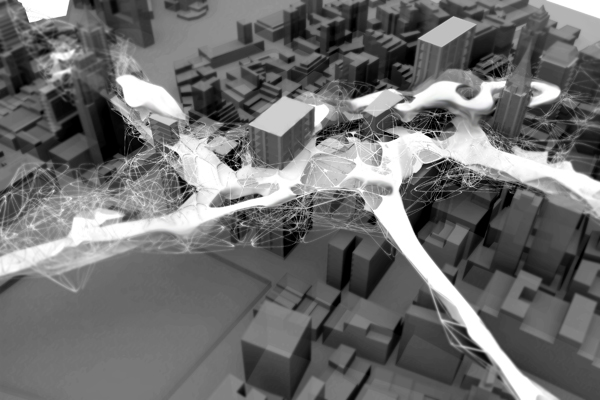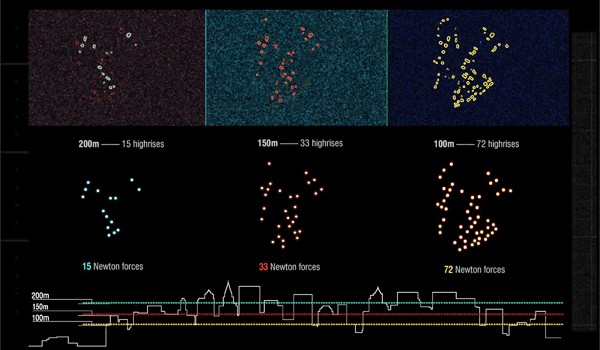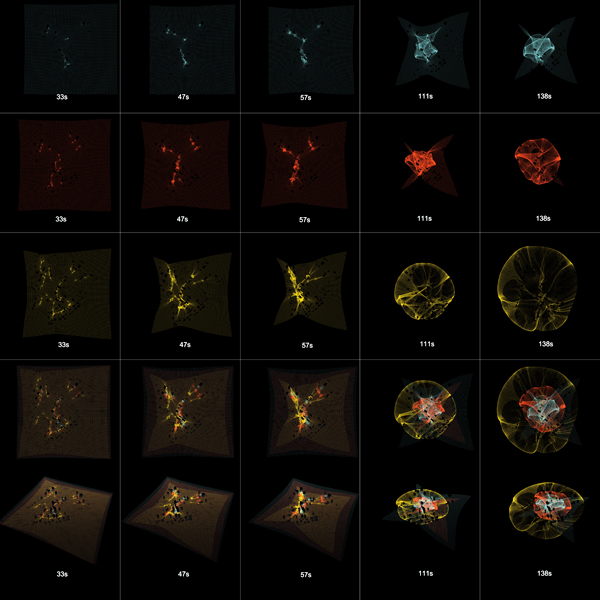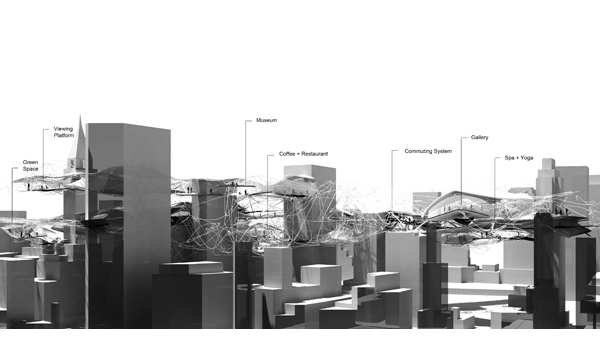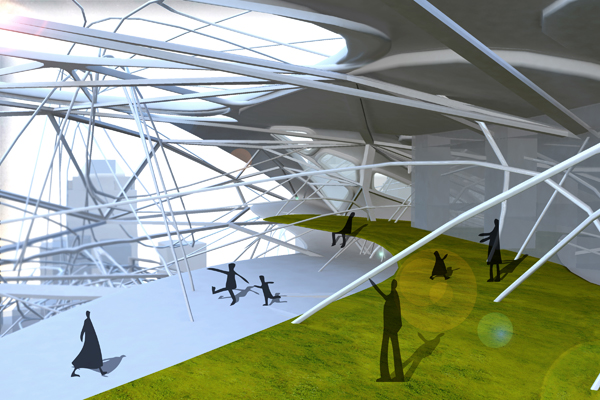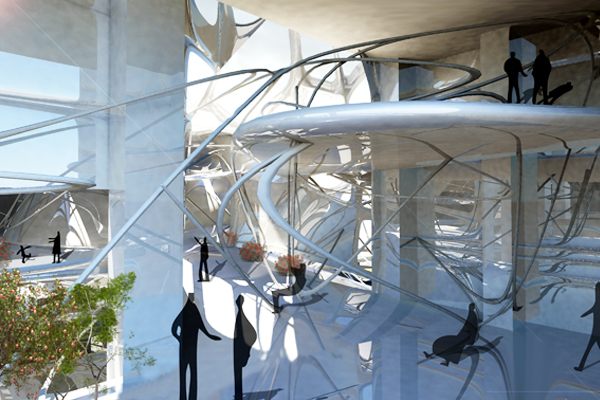The research proposal by Jingzhe Wei & Qian Xing from the University of Pennsylvania focused on the upcoming large snowstorms in New York City. The proposed solution is “Upside down New York” and there are three main goals: 1. People would not be affected by snowstorms with this sky system. 2. Change the track of New York People’s urban life from the ground level to the sky level. 3. Create a “Bigger New York City” without changing the ground building density.
In this project, the structure and connection would be the most important issues. They suggested a kind of bridge that is grown instead of built. It’s like the growing trees, which could link each other by their own roots and finally turn out to be a stable bridge. They used Maya particles as the method to find out the inner attractive forces between buildings. Manhattan is special for its high density. They set three layers in the section of downtown Manhattan with different height of 100, 150, and 200 meters and there would be one attractive force on each cross sectional plane. When the particles ran, it could be easily seen of the different density of particles due to various buildings’ height and density. The most correlated points would be extracted out and connected by their networking proximity.
As to the structure, the sky system would directly graft onto the original high rises and they would grasp the sky lobbies tightly as tree branches and connected with each other as bridges. Meanwhile, the ground functions would be lifted up to the sky system. The functions would appear in different zones due to the different density.

